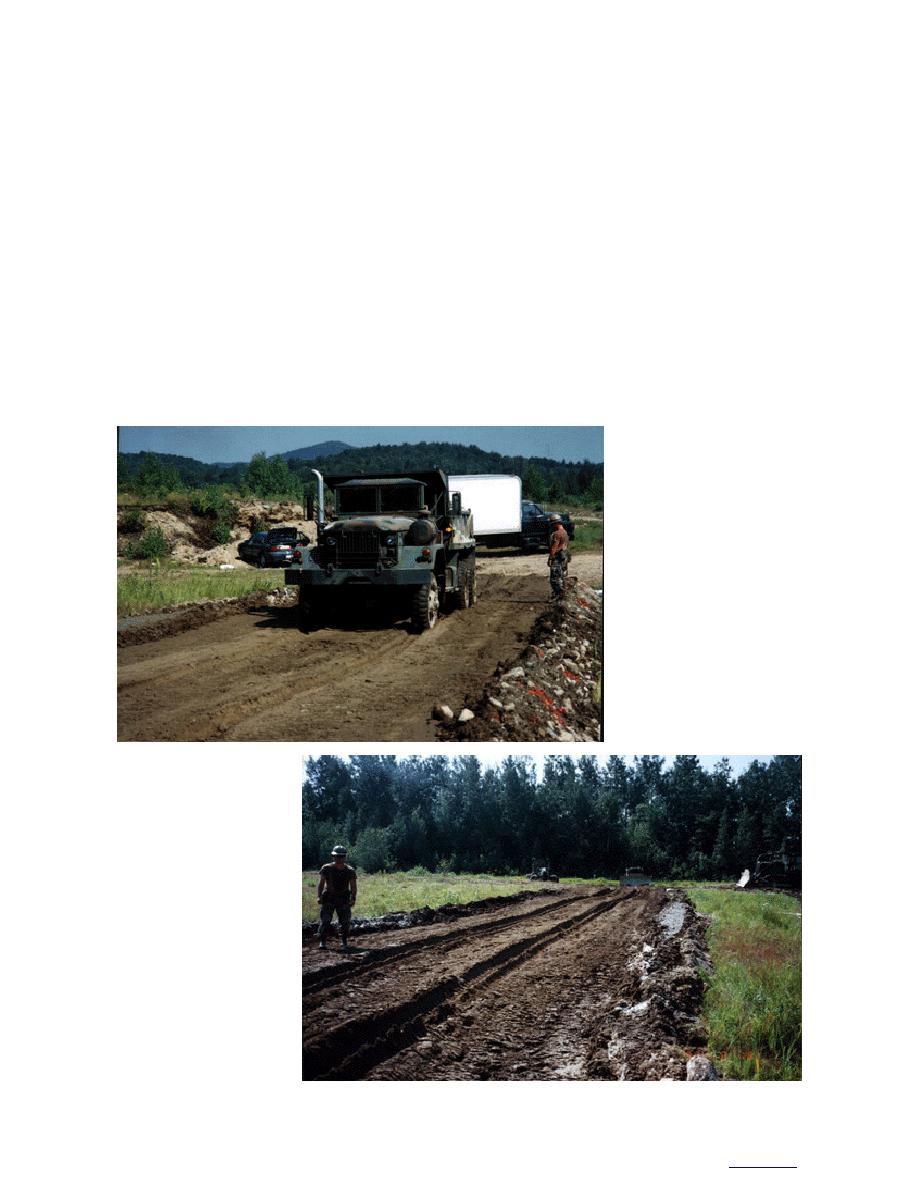
Next, 136 kg (300 lb) of the absorbent was add-
the test section would have been impassable in
ed (Fig. 20) and mixed with a grader (Fig. 21). The
4-wheel drive before treatment. A loaded 5-ton
grader trafficked only the test section and did not
dump truck was then driven through the test sec-
use its blade or scarifying teeth to mix the soil and
tion (Fig. 23 and 24). It left approximately 102-
absorbent. After mixing, a dozer was used to
mm- (4-in.-) deep ruts in the center and 203-mm-
back-blade the test section and provide a smooth
(8-in.-) deep ruts on either end. The 5-ton dump
surface. The center of the section was dryer than
truck then trafficked the section 30 times and left
the ends. This was due to standing water before
178- to 279-mm- (7- to 11-in.-) deep ruts in the
the absorbent was added at the far end of the test
center and far end and 356-mm- (14-in.-) deep
section and not enough absorbent being added to
ruts at the near end (Fig. 25). The rutting was not
caused by the soil being too "wet" but the result
the near end of the test section.
of a lack of cohesion. At the end of the test the soil
A Commercial Utility and Cargo Vehicle
looked dry and friable. The average water con-
(CUCV) was driven across the test section leaving
tent of the top 76 mm (3 in.) of soil was 17.8%. Its
approximately 51-mm- (2-in.-) deep ruts in the
grain size distribution was not determined. The
center of the section and 152-mm (6-in.) ruts on
cone penetrometer test results were not valid
either end (Fig. 22). The CUCV was able to drive
through the test section in 2-wheel drive when
because the cone hit the larger gravel pieces.
Figure 23. Trafficking the sec-
tion with a 5-ton dump truck.
Figure 24. Test section after
one pass with a 5-ton dump
truck.
15



 Previous Page
Previous Page
